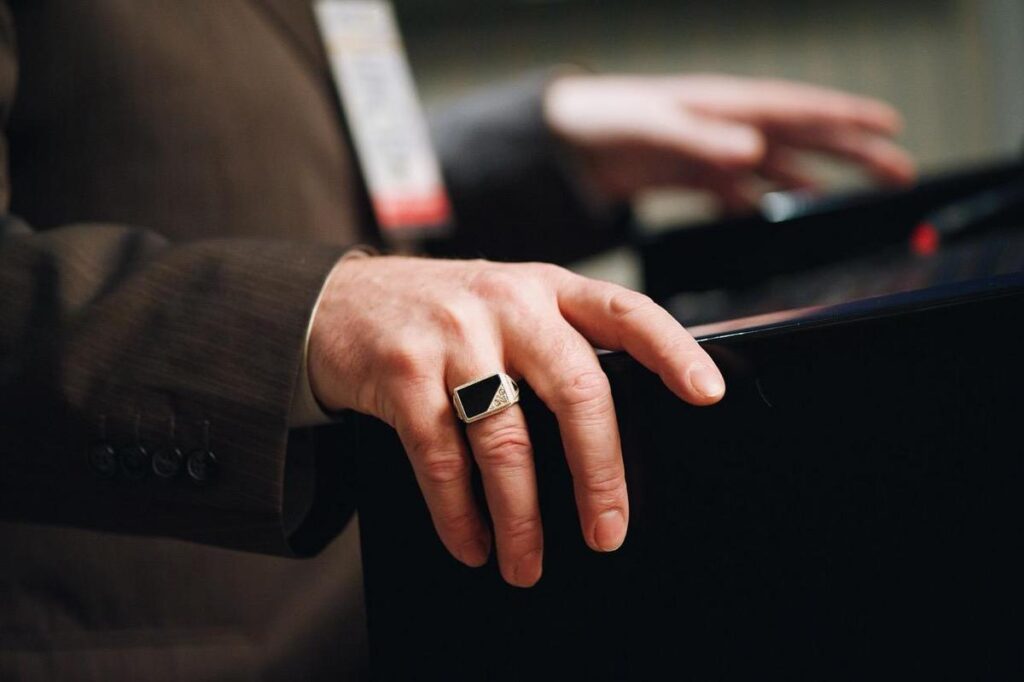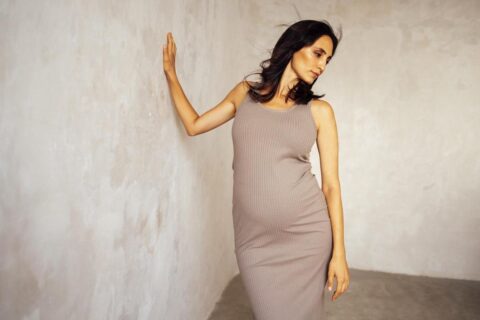Summary
- Measure ring size using string, paper strips, or professional ring sizers.
- Accurate measurements: measure at different times of day, when fingers are warm, and consider ring width.
- Most men’s ring sizes range between 8 to 14; average is 9-10.
- International sizes differ; U.S. uses numbers, UK uses letters.
- Convert inches to size by wrapping a string, marking and measuring it, and using a chart.
- Use a printable chart, ensure it’s at 100% scale, and verify measurements.
- Physique affects size; taller/larger men might need bigger sizes.
- Ring width affects fit; wider bands might need a size larger.
- Ensure comfort and fit for long-term wear.
Are you ready to find the perfect fit for your ring? Knowing how to use a men’s ring size chart can make all the difference. I’ll show you the best way to measure your ring size using simple tools. Whether you’re measuring with string or checking international size differences, you’ll get it right. Stay with me for a step-by-step guide that ensures a flawless fit every time. Let’s dive in!
How Can You Measure Men’s Ring Size Accurately?
Measuring a man’s ring size might seem tricky, but it’s simple with the right tools. You need items like string, paper strips, or a professional ring sizer. A string or paper strip wraps around the finger to find its size. Then you mark where the string meets, measure it with a ruler, and find the size on a chart. Professional ring sizers are more exact and often give the best result.
You can also visit a jeweler to get a free ring sizer, which helps find a size without cost. These tools save you time and trouble because they are precise. Jewellers use them and might offer expert advice for the best fit.
What Tips Improve Measurement Accuracy?
Knowing a few tips can improve accuracy in measuring ring size. First, measure the ring size at different times of the day. Your finger’s size can change from morning to evening. It’s wise to measure when fingers are warm, like later in the day. This makes sure the ring isn’t too tight or loose.
Also, adjust for the width of the ring. Wide bands tend to fit tighter, so you might need a size bigger. Thick rings fit differently, and a small adjustment can improve comfort.

Most men’s ring sizes range from 8 to 14. The average size is between 9 and 10. But remember, body conditions affect finger size. When measuring the circumference of the finger, measure it twice to confirm. You want a snug fit, avoiding rings that slip off or feel uncomfortable.
Reliable methods, like a printable ring size chart, offer a good guide at home. This method is best for a quick reference. Just make sure to print the chart correctly, at 100% scale. By following this method and keeping these tips in mind, you’ll likely get the right fit every time.
Lastly, always double-check your size with a jeweler if possible. Jewelers provide precise tools and services that aid in finding the perfect fit with confidence. Finding a proper fit is essential for saving time and ensuring comfort for long-term wear.
How Do International Ring Size Systems Differ?
International ring sizes can be confusing due to different systems. Each country has its own sizing, making it tricky to find a perfect fit. Here’s a quick overview of the main differences and how to navigate them.
Why Are International Size Conversions Important?
Knowing the different systems helps avoid mistakes when buying rings abroad. In the U.S., ring sizes are numerical, typically 1 to 13, while in the UK, they use letters. European sizes generally use numbers too but align differently. Missteps can lead to a ring that doesn’t fit since size 9 in the U.S. is not the same as size 9 elsewhere. This chart might help: Men’s Ring Size Chart.
Common Conversion Challenges
Shifting from one system to another can confuse. If you aren’t careful, you might end up with the wrong size. Each sizing system has its unique measurements, which can lead to errors during conversions. It’s crucial to double-check before purchase to ensure comfort and fit.
How Can You Convert Inches to Ring Sizes?
Measuring your size in inches is a good start for accurate conversion. Here’s how:
Wrap: Use a string or paper strip to wrap around your finger where the ring will sit. Make sure it’s not too loose or tight.
Mark: Mark the spot where the string meets.
Measure: Lay the string flat and measure it with a ruler (in inches).
Now, use this measurement to find your ring size. Charts often match inches to the varying international sizes. For example, if your finger measures 2.55 inches, you might be a size 9 in U.S. charts. Always refer to a reliable chart for other countries’ conversions.
Converting from inches directly to ring sizes involves a bit of math. Use the measurement as a starting point and consult size guides that match inches to each country’s system. This method improves accuracy and helps you get the right fit.
Understanding these differences helps you purchase with confidence, avoiding a ring that isn’t quite right. If you travel or shop online, knowing these distinctions saves you time and ensures you get a ring that fits well. All it takes is patience and a good conversion chart.
How Can You Use a Printable Ring Size Chart?
When picking the perfect ring, knowing your size is key. A printable ring size chart helps with this, making measuring at home simple and easy. But first, you need to understand how to use it correctly.
What Are the Steps for Using a Printable Chart?
Start by downloading your free printable ring size chart for men. Make sure you print it on standard paper to avoid size issues. Look closely at the sheet for a scale guide or reference line. This is vital. You must compare any printed measurement with this line to confirm accuracy.
Once you have your sheet ready, take your ring—or if none, a string or paper strip—and place it over the chart. Match the inner edge of your ring to the ring image that fits it best. If using a string, wrap it around your finger where you want the ring to sit. Mark where the string meets, then measure that length against the chart. Pay careful attention to the sizes marked because, typically, men’s ring sizes range from 5 to 10 on these charts.
How to Adjust Printable Charts for Accuracy?
Ensuring your printout is at the right scale is crucial for precise sizing. Printers sometimes alter print sizes, affecting your results. Check that the scaling setting on your printer is set to 100%. Measure a line on your printout with a ruler as a double-check. This step helps you catch issues before trying your ring.
If the chart seems off, and you don’t want to reprint, adjust a DIY approach. Compare your measurements with other objects, such as a known size ring or a professional ring sizer, to ensure accuracy. You can also visit a local jeweler to confirm your size and gain an expert opinion.
Using a printable ring size chart is a practical way to measure ring size at home. However, precision is key; always make sure your printout is accurate and consult with professionals when you can. This ensures you choose the right fit, contributing to a comfortable and worry-free ring wear experience.
What Factors Influence the Best Fit for Men’s Rings?
How Do Height and Weight Affect Ring Size?
When figuring out your perfect ring size, it’s smart to consider height and weight. A man’s physique can give clues about his ring size. Generally, taller men and those with larger builds may need larger ring sizes. Conversely, men with slimmer frames might have smaller ring sizes. While these are common trends, exceptions always exist. It’s always best to measure your ring size directly. Besides, finger sizes can differ between individuals, even those with similar body dimensions.
Why Are Ring Width and Comfort Important?
Ring width is a major factor in comfort and fit. Wide rings can feel tighter than narrow ones. Thus, when opting for a wider band, often a half or full size up is advisable. Balance is key: the ring should neither squeeze nor slip. Comfort should not be sacrificed for style. Also, consider daily activities. Wider bands can hinder some tasks, so select a width that fits your lifestyle. The ultimate goal is to find a ring that fits well and is comfortable. Checking out various widths can help you make a good choice.
Conclusion
Finding the right ring size is crucial. Use tools like string, paper, and professional sizers for accuracy. Remember, measuring fingers at various times gives better results. International size systems differ, so knowing conversion methods is key. Printable size charts are handy but check the scale for accuracy. Height, weight, and ring width all impact the fit. Now, you’re ready to measure and choose with confidence. Ensure comfort and style for any occasion.








